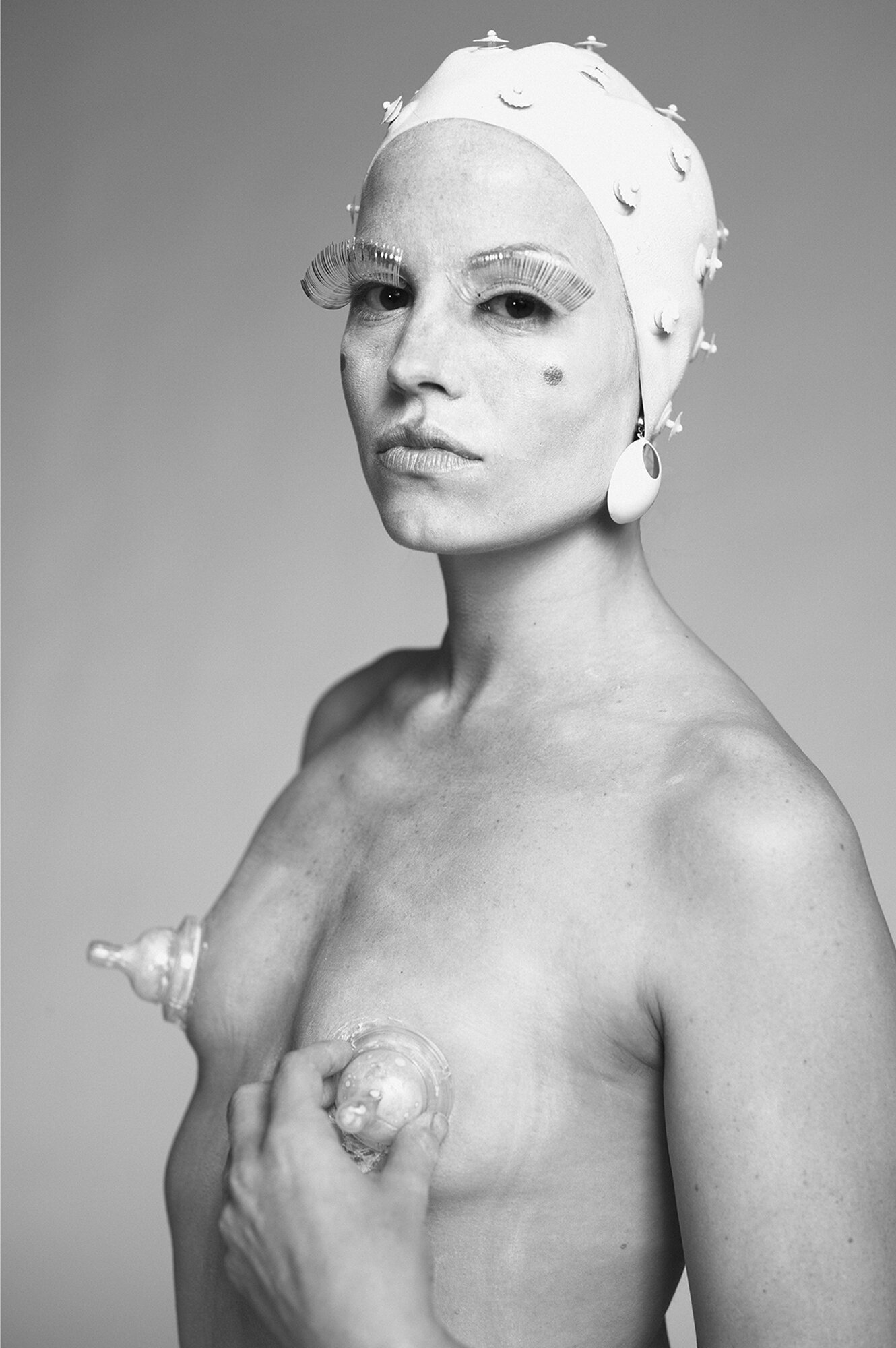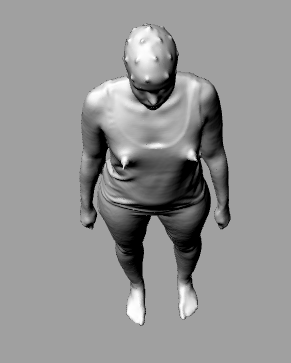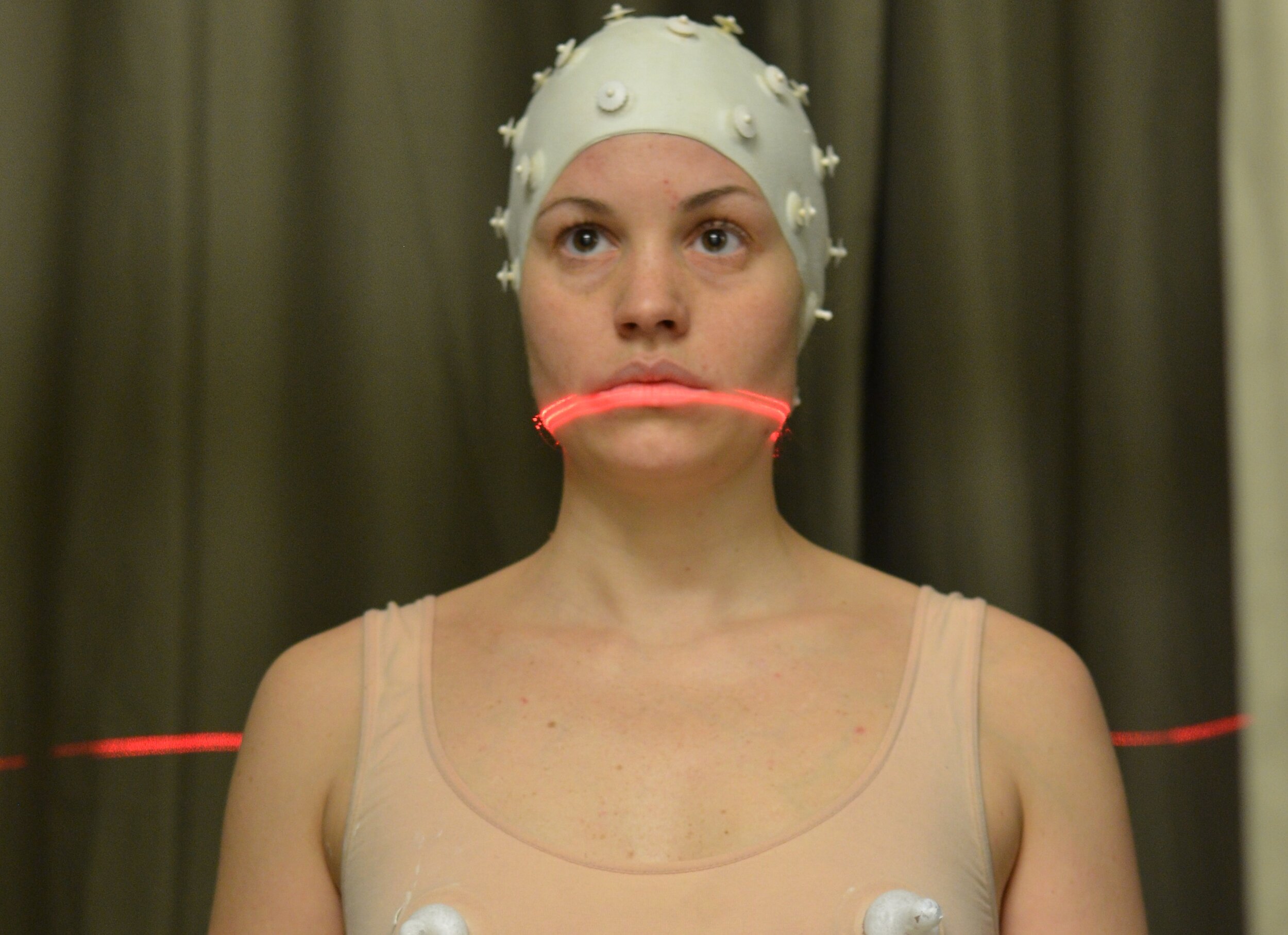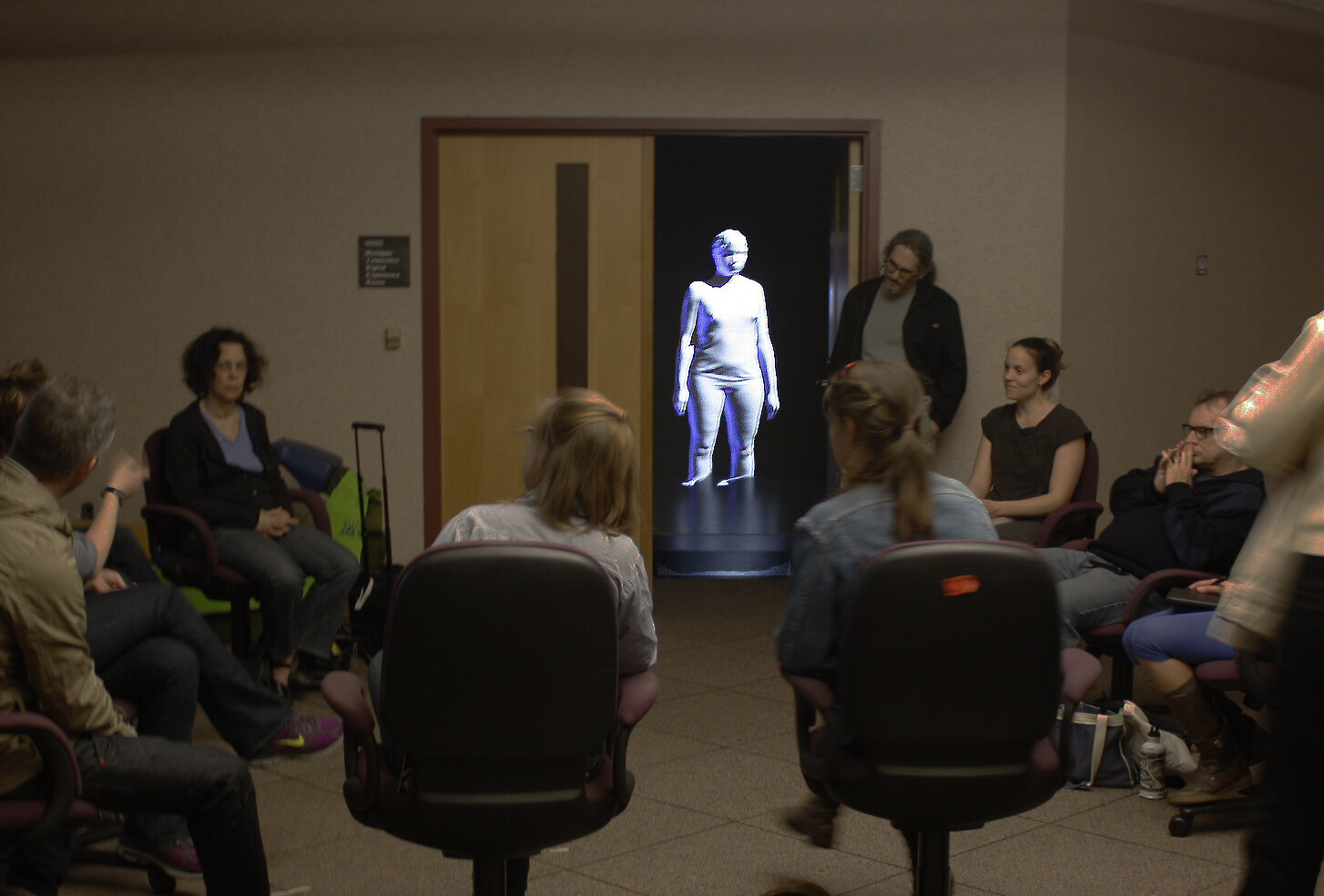Re:PRODUCTION
video + performance
Part of the Re:Production Series, the following works are videos and performances that investigate ideas of function and dys-function - (asking what is working, what is not?) - using the visual vocabulary of the body, and systems of production, and reproduction.
post-modern venus: portrait
With this piece, I want to use my body in a way that references object-ification: the physical body is called into question. My costume alludes to a reproductive machine, and highlights the mechanical processes of supporting life, contrasting the aesthetic of a somewhat androgynous cyborg with the identification of feminine/mother. Experience with disability fuels my work, which probes the divide between our projected selves as they relate to the trappings of our real and perceived bodies. This work questions if there is a difference between what is real with relation to our bodies and our identities, and what is constructed, reflected or projected.
Photo Credit: This portrait was taken by Chiun Kai Shih, fashion photographer for Vogue Magazine.
postmodern venus:
virtual INSTALLATION [INTERACTIVE]
Inspired by Janine Antoni's Lick and Lather, POSTMODERN VENUS is a mesh file designed to appear as a kind of "light/marble" (luminous and also worn over time, as if by exposure to rain or weather). POSTMODERN VENUS exists as a full-scale interactive hologram of my body. In its installation form, one can step inside the body and look within its cavities or can walk around the body, examining it- it invites and inspired touch, but doing so results in either slipping inside the body or moving through it. This installation deals with how we construct our identities through virtual interfaces as well as through our perceived functions in society: labels we apply to ourselves (ie: mother, father, teacher, worker) all connote ideas of function. Gender has been defined by its reproductive functionality in binary terms, despite a spectrum of identities and biological features that blur the line between male/female. With this piece, I use my body to reference object-ification: the physical body is called into question. My costume alludes to a reproductive machine, highlighting the mechanical processes of supporting life, contrasting the aesthetic of a somewhat androgynous cyborg with the identification of feminine/mother. Experience with disability fuels my work, which probes the divide between our projected selves as they relate to the trappings of our real and perceived bodies. This work questions if there is a difference between what is real with relation to our bodies and our identities, and what is constructed, reflected or projected.
art make-up [after bruce nauman]
Art Make-Up examines identity, using my body as a landscape for cultural projections. The 35 minute performance features me in my studio applying 4 different colors of make-up - red lipstick, green eye-shadow, black eyeliner, and pink blush. Completely covering my visible body, the make-up is reduced to pigment, while the act of application transforms from a relatively benign daily ritual to something aggressive, hyperbolic, humorous, and grotesque, transcending its specific cultural value. The position of my body, the position of the camera, and the lack of a concrete narrative conclusion are modeled after Bruce Nauman's 1967/1968 taped performances in which he applies four pigments (white, pink, green, and black in succession) to his naked torso, until it is monochromatic. By using my body as a landscape for the abstract application of color, I also considered other renowned male minimalist artists, like Yves Klein, that used women's bodies as tools for painting. The background noise is the sound of heavy machinery and equipment being used in my communal studio. Initially I considered editing it from the video – upon reflection, I felt that it contributed to an aura of anxiety, ambiguity, and potential aggression. This video stems from an interest in participating in the largely male-dominated history of abstraction and minimalism, while exploring gender as performance.
De/Construction Re:production
This video contains edited and abstracted clips that investigate the nature of how we approach sexual reproduction in the entertainment, food, and parenting industries. I was interested in how we approach sex through infomercials, entertainment for adults and children, and through product advertising aimed specifically at mothers. Here, human reproduction is romanticized, sanitized, sensationalized, and presented as science. This video exploits the dizzying and kaleidoscopic view of the most basic act.
The Re:Production Series (ongoing) uses the visual language and cultural vernacular of industrial production to question its very networks, asking how notions of embodiment and labor - and structures of commerce and mass-manufacturing - act upon one another.





